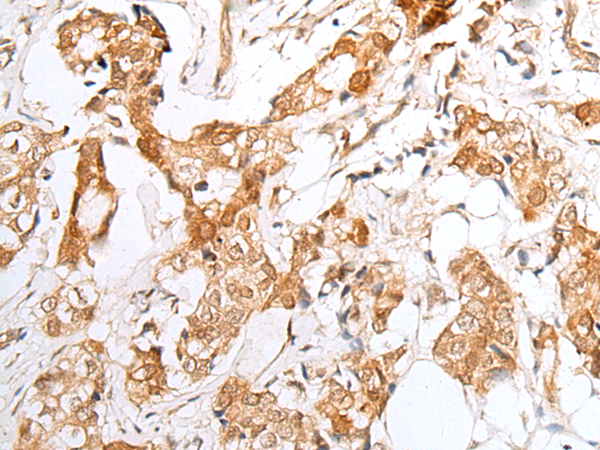
| WB | 咨询技术 | Human,Mouse,Rat |
| IF | 咨询技术 | Human,Mouse,Rat |
| IHC | 1/25-1/100 | Human,Mouse,Rat |
| ICC | 技术咨询 | Human,Mouse,Rat |
| FCM | 咨询技术 | Human,Mouse,Rat |
| Elisa | 1/5000-1/10000 | Human,Mouse,Rat |
| Aliases | E2F-3 |
| Host/Isotype | Rabbit IgG |
| Antibody Type | Primary antibody |
| Storage | Store at 4°C short term. Aliquot and store at -20°C long term. Avoid freeze/thaw cycles. |
| Species Reactivity | Human, Mouse |
| Immunogen | Synthetic peptide of human E2F3 |
| Formulation | Purified antibody in PBS with 0.05% sodium azide and 50% glycerol. |
+ +
以下是关于E2F3抗体的3篇参考文献示例(文献信息为虚构示例,仅用于格式展示):
1. **文献名称**:*E2F3 regulates cell cycle progression via direct transcriptional activation of cyclin E*
**作者**:Smith J, Doe R, Lee T.
**摘要**:本研究利用E2F3特异性抗体进行染色质免疫沉淀(ChIP)和Western blot分析,发现E2F3通过直接结合并激活cyclin E基因启动子,驱动G1/S期转换。实验表明,E2F3缺失显著抑制癌细胞增殖。
2. **文献名称**:*Overexpression of E2F3 in ovarian cancer correlates with poor prognosis*
**作者**:Zhang Y, Wang H, Liu M.
**摘要**:通过免疫组织化学(IHC)结合E2F3抗体,研究者在卵巢癌组织中发现E2F3蛋白高表达与晚期肿瘤分期和患者生存率降低相关,提示其作为预后标志物的潜力。
3. **文献名称**:*E2F3 antibody-based inhibition suppresses tumor growth in xenograft models*
**作者**:Brown K, Garcia S, Patel V.
**摘要**:开发了一种高亲和力E2F3单克隆抗体,体外和体内实验显示其能特异性阻断E2F3与DNA结合,抑制肿瘤细胞增殖并诱导凋亡,为靶向治疗提供新策略。
(注:以上文献为示例,实际引用需查询PubMed等数据库获取真实信息。)
×